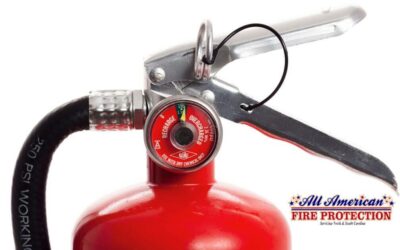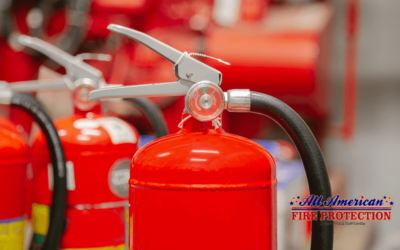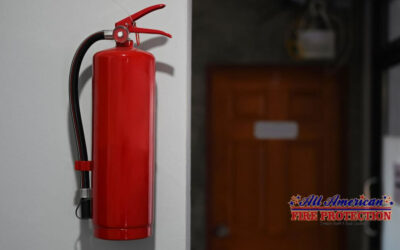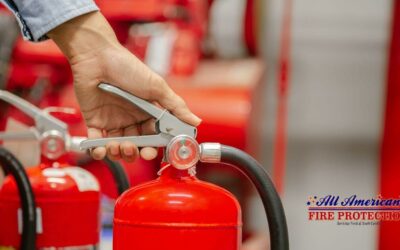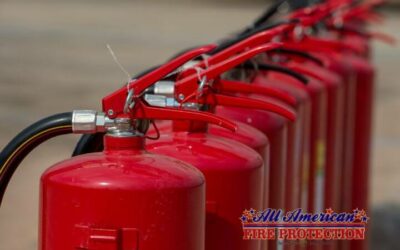Fire extinguishers often play the understated hero in the realm of home safety, overshadowed by more visible measures like smoke alarms and security systems. Yet, they hold a unique position as the immediate response to emerging threats, blending efficacy with simplicity. This distinctive role elevates them beyond mere safety equipment, marking them as essential tools in safeguarding homes from the devastation of fires. All American Fire Protection ensures this by providing top-notch fire extinguishers.
Central to this is understanding the variety of fire extinguishers available—Water, Foam, Dry Powder, CO2, and Wet Chemical—each engineered for specific types of fires. Diving deeper, each fire extinguisher type not only offers a solution to different fire classes—Class A for ordinary combustibles, Class B for flammable liquids, Class C for electrical fires, Class D for metal fires, and Class K for cooking oils and fats—but also embodies unique properties, application methods, and maintenance requirements. The subsequent sections will delve into these nuances, enriching your knowledge on how to effectively deploy these lifesaving devices, maintain them for reliability, and ultimately, fortify your home against fires with precision and confidence.
What is a fire extinguisher?
A fire extinguisher is a critical safety tool designed to tackle small fires at their initial stages, preventing them from growing into larger, more destructive fires. It consists of a metal cylinder containing a specific extinguishing agent that can put out certain types of fires. There are various extinguishers available, such as Water, Foam, Dry Powder, CO2, and Wet Chemical.
Each type is formulated to combat different fire classes—from Class A (ordinary combustibles) and Class B (flammable liquids) to Class C (electrical fires), Class D (metal fires), and Class K (cooking oils and fats). Knowing which extinguisher to use for the corresponding fire class is essential in effectively preventing home fires and maintaining safety.
Why choosing the right extinguisher is crucial
Selecting the appropriate fire extinguisher is critical for safeguarding homes against fires. Each type—Water, Foam, Dry Powder, CO2, and Wet Chemical—is specifically tailored to combat different fire classes effectively. Using the wrong extinguisher can not only be ineffective but also dangerous, potentially exacerbating the fire.
For example, using a water extinguisher on an electrical fire can cause the fire to spread, while a CO2 extinguisher is designed for such scenarios. Understanding the match between extinguisher types and fire classes—Class A through Class K—ensures rapid and effective response in fire emergencies, minimizing damage and promoting safety.
Types of fire extinguishers
Different fire extinguishers are formulated to combat specific types of fires, categorized by the extinguishing agent they contain. The following table provides detailed information on each type, including specific examples of scenarios or locations where each type of extinguisher is most effectively used:
| Extinguisher Type | Fire Class | Ideal Use Scenario/Location | Specific Examples |
|---|---|---|---|
| Water | Class A | Ordinary combustibles like wood, paper, and cloth | Offices, schools, libraries |
| Foam | Class A, B | Flammable liquids and ordinary combustibles | Gas stations, garages, vehicle repair shops |
| Dry Powder | Class A, B, C | Combustibles, flammable liquids, and electrical fires | Workshops, garages, vehicles, boats |
| CO2 | Class B, C | Electrical fires and flammable liquids | IT server rooms, laboratories, electrical switch rooms |
| Wet Chemical | Class K | Cooking oils and fats | Commercial kitchens, restaurants, food trucks |

How to use a fire extinguisher effectively
Effectively using a fire extinguisher can be summarized with the PASS technique: Pull, Aim, Squeeze, Sweep. Below is a detailed breakdown of each step.
PASS technique: Pull, Aim, Squeeze, Sweep
Pull the pin to unlock
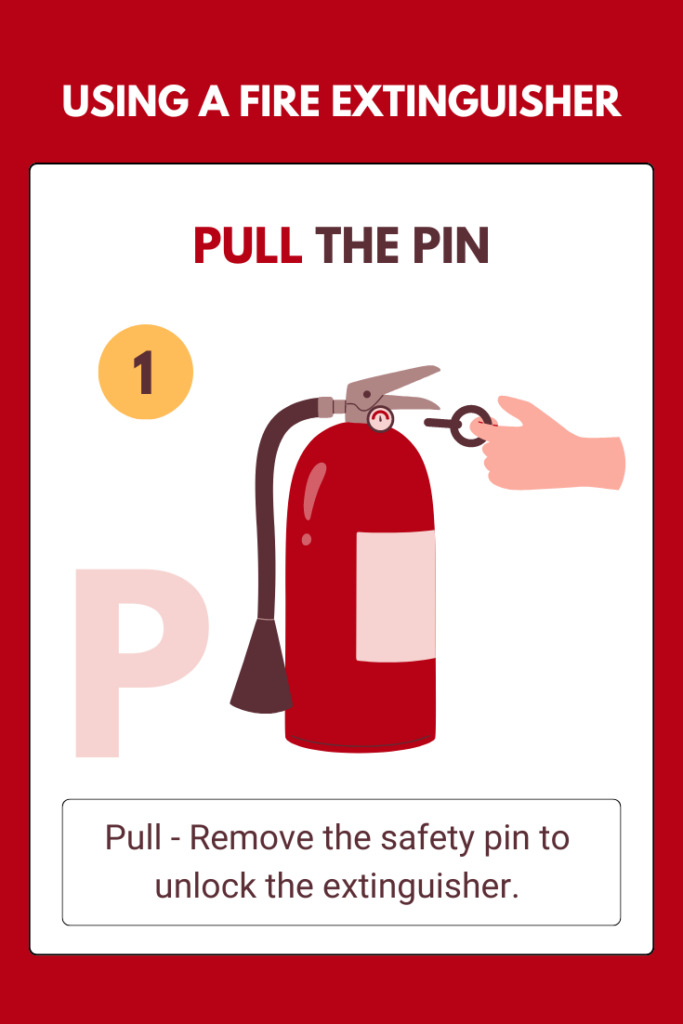
Aim low at the base of the fire
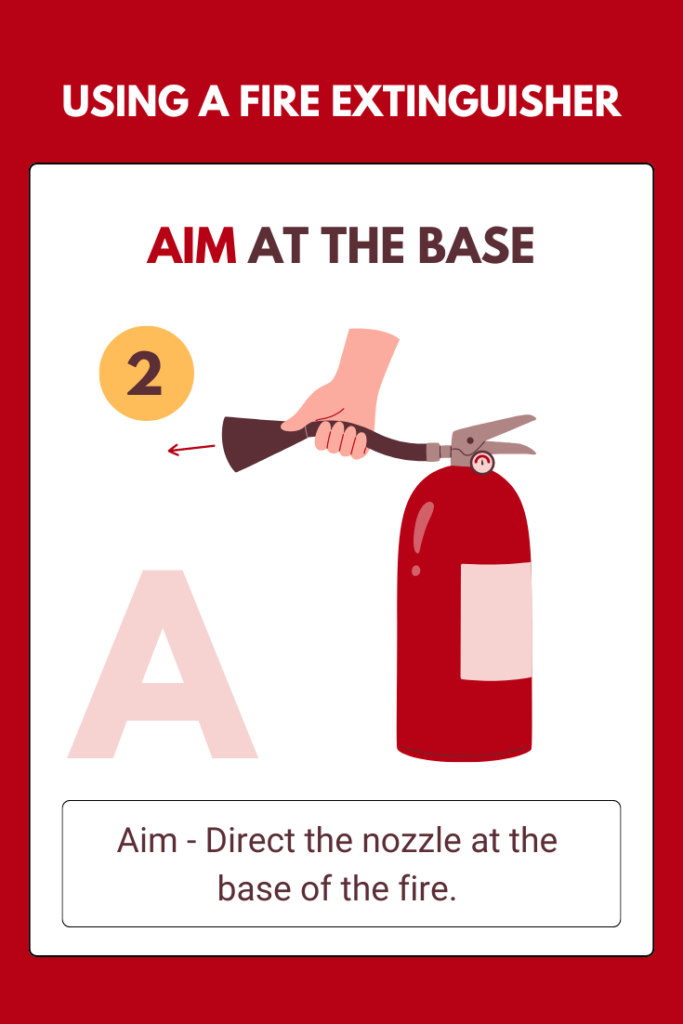
Squeeze the handle to release extinguishing agent

Sweep side to side at the fire’s base

Integration into Educational Materials
For educational materials, pamphlets, or online resources, these visual aids can be integrated alongside the textual description of the PASS technique. Each step would be accompanied by its respective image, making the instructions easier to follow. Additionally, a QR code could be included, linking to a video demonstration of the PASS technique in action, providing a multi-modal learning experience.
In-Person Training
During in-person fire safety training sessions, trainers could use these diagrams as part of their presentation slides. Physical demonstrations could be performed simultaneously, allowing participants to visually connect the step-by-step instructions with the real-life application.

Where to place fire extinguishers in the home
Strategically positioning fire extinguishers in the home is crucial for enhancing safety and ensuring a quick response during a fire emergency. Below are specific placement recommendations, including the ideal distance from potential fire sources, to offer more actionable advice for readers. Key locations include:
Kitchen
- Placement: At least 30 feet away from the stove to avoid being unreachable in the event of a stove fire but still within the kitchen for quick access.
- Type Recommended: Wet Chemical extinguisher for cooking oil fires (Class K) or a multipurpose extinguisher that includes Class K coverage.
Bedroom
- Placement: In the hallway outside of bedrooms to ensure accessibility for everyone. If multiple floors, one extinguisher per floor is recommended.
- Type Recommended: Multipurpose (ABC) extinguisher for general use.
Garage
- Placement: Near the garage door entrance but not directly next to potential fire sources like fuel storage areas.
- Type Recommended: Dry Powder (ABC) extinguisher for various types of fires that can occur in a garage, including flammable liquids and electrical fires.
Living Room
- Placement: Near exits or in easily accessible, visible locations, away from potential fire sources like fireplaces or electronics.
- Type Recommended: CO2 extinguishers for electrical equipment fires or a multipurpose extinguisher for general use.
Near Exit Points
- Placement: Close to the exit points of the home to grab easily on the way out in case of a fire, ensuring you don’t have to travel further into the home to retrieve it.
- Type Recommended: Multipurpose (ABC) extinguisher for general use, ensuring readiness for any type of fire that might block an exit path.
Additional Recommendations:
- Visibility: Fire extinguishers should be placed in visible locations, not hidden behind curtains or furniture.
- Mounting: Consider mounting extinguishers on walls with brackets to keep them off the floor and away from children’s reach.
- Accessibility: Ensure nothing obstructs access to the extinguisher, allowing for quick and easy retrieval.
Maintenance of fire extinguishers
Ensuring regular maintenance of fire extinguishers is crucial for their reliability and functionality during emergencies. This process includes:
- Regular inspection to identify any physical damage or signs of wear and tear that could impair functionality.
- Monthly checks of the pressure gauge to ensure it’s within the operational range, indicating the extinguisher is ready for use.
- Recharge after use, a vital step to restore the extinguisher to full operational capacity, ensuring it’s prepared for any future emergencies.
- Professional recharge as required, following the manufacturer’s guidelines, to guarantee the extinguisher’s effectiveness.
- Monitoring the expiry date is essential, as the chemicals inside the extinguisher can degrade over time, reducing its firefighting capabilities.
Adhering to these maintenance steps is key to maintaining the effectiveness and reliability of fire extinguishers, making them a dependable line of defense against fires at home.

Fire Extinguisher Maintenance Checklist
The following table provides a detailed maintenance checklist or schedule, ensuring comprehensive and timely upkeep of fire extinguishers:
| Maintenance Task | Description | Frequency | Notes |
|---|---|---|---|
| Visual Inspection | Check for physical damage, corrosion, leaks, or nozzle obstructions. | Monthly | Look for any signs of wear or damage. |
| Pressure Gauge Check | Ensure the gauge’s needle is in the green area, indicating operational readiness. | Monthly | If the needle is not in the green area, have the extinguisher serviced. |
| Weight Check | Weigh the extinguisher to ensure it meets the expected weight. | Annually | A significant weight loss may indicate a leak. |
| Check for Accessibility | Ensure the extinguisher is easily accessible, not blocked by objects. | Monthly | Clear any obstructions around the extinguisher. |
| Inspection Tag | Check the last professional inspection date on the tag. | Annually | Professional inspections are typically required annually. |
| Hose and Nozzle Check | Inspect the hose and nozzle for cracks, clogs, or damage. | Annually | Replace if any damage is found. |
| Recharge After Use | Recharge the extinguisher immediately after any use, even if partially used. | After each use | Essential to ensure the extinguisher is ready for the next emergency. |
| Professional Recharge | Have the extinguisher professionally recharged. | As required | Follow the manufacturer’s guidelines or after any use. |
| Expiry Date Check | Check the manufacturer’s label for the expiry date and replace if necessary. | Check upon inspection | Chemical agents degrade over time and may not be effective. |
This exhaustive checklist ensures that fire extinguishers are maintained in peak condition, ready to operate effectively in the event of a fire. Regular adherence to this schedule can significantly contribute to the safety and preparedness of any home or establishment.
What to do if a fire cannot be controlled
If a fire grows beyond a manageable level, immediate evacuation becomes the top priority. It’s crucial to leave the premises quickly and safely, utilizing pre-planned escape routes to ensure an orderly and efficient exit. Once at a safe location, call emergency services promptly, providing them with specific details about the fire’s location and severity to aid in their response efforts.
Evacuate immediately
Evacuating immediately is essential when a fire is beyond control. Prioritize quick and safe exit to protect yourself and others.
Use pre-planned escape routes
Pre-planned escape routes are crucial for an orderly and swift evacuation, reducing confusion and ensuring everyone knows the safest way out.
Call emergency services
Once safely outside, it’s critical to call emergency services without delay. Quick action can significantly impact the outcome.
Provide specific details about the fire
When alerting emergency services, providing specific details about the fire, including its location, intensity, and known hazards, aids in their response strategy.
Above all, remember that personal safety is paramount; under no circumstances should you re-enter a burning building.


